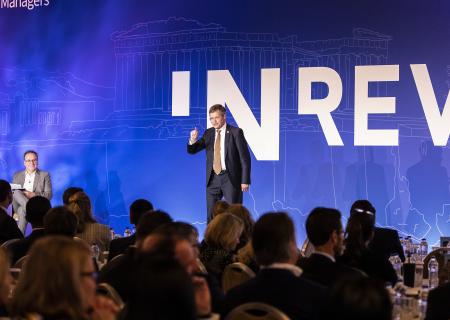A global playing field
Alignment, harmonisation and headwinds
IQ caught up with Tommy Brown from LGT Capital Partners for his insights on the state of the global non-listed real estate industry.
The global real estate industry has evolved rapidly over recent years. The shift has been characterised by two key themes: the continued expansion of institutional grade opportunities – within new sectors and segments and beyond funds into a broader range of vehicles; and the continued weight of global capital inflows. This evolution has mirrored the general age of globalisation aimed at harmonised growth.
Investing globally depends on the ability to compare performances which, historically, real estate investors couldn’t do. However, this changed radically when INREV recognised early on the need to create a level playing field. It took the lead in setting the funds framework and establishing common standards for vehicles in Europe.
We’re entering the period of the ‘Great Transformation’. There’s global alignment on research. There’s increasing harmonisation on standards. But there are also headwinds, with secular re-pricing, ESG and climate change.
In 2015, INREV signed an agreement with the NCREIF PREA Reporting standards, supported by ANREV to further advance global standards. Since 2020, INREV’s memorandum of understanding with ANREV and NCREIF and to for a Global Alliance, has hugely enhanced further cooperation across the three global regions. The focus has firmly been on a collective effort to enhance best practice across the asset class, with each of the association partners contributing specific insight and expertise. Closer integration has resulted in key tools such as the Global Definitions Database and the Total Global Expense Ratio , which help to broaden everyone’s understanding of the industry.
The creation of global research reports and indices – from the Investment Intentions and Capital Raising surveys to the Global Real Estate Funds Index and the Global Investor indices – have provided institutional investors with the comparable data they need to have confidence in the global market.
The key question is what do the next few years look like? Recently, there’s been an uncoupling of the globalisation trend, accelerated by increasingly unpredictable geopolitics. The challenge for the future will be how can the global industry deal with more uncoupling and how can it plug geopolitical risk into the equation.
As Tommy points out: ‘We’re entering the period of the ‘Great Transformation’. There’s global alignment on research. There’s increasing harmonisation on standards. But there are also challenges, with secular re-pricing, the integration of still evolving ESG standards and the impact of climate change. The industry needs to coalesce around these issues too.’















